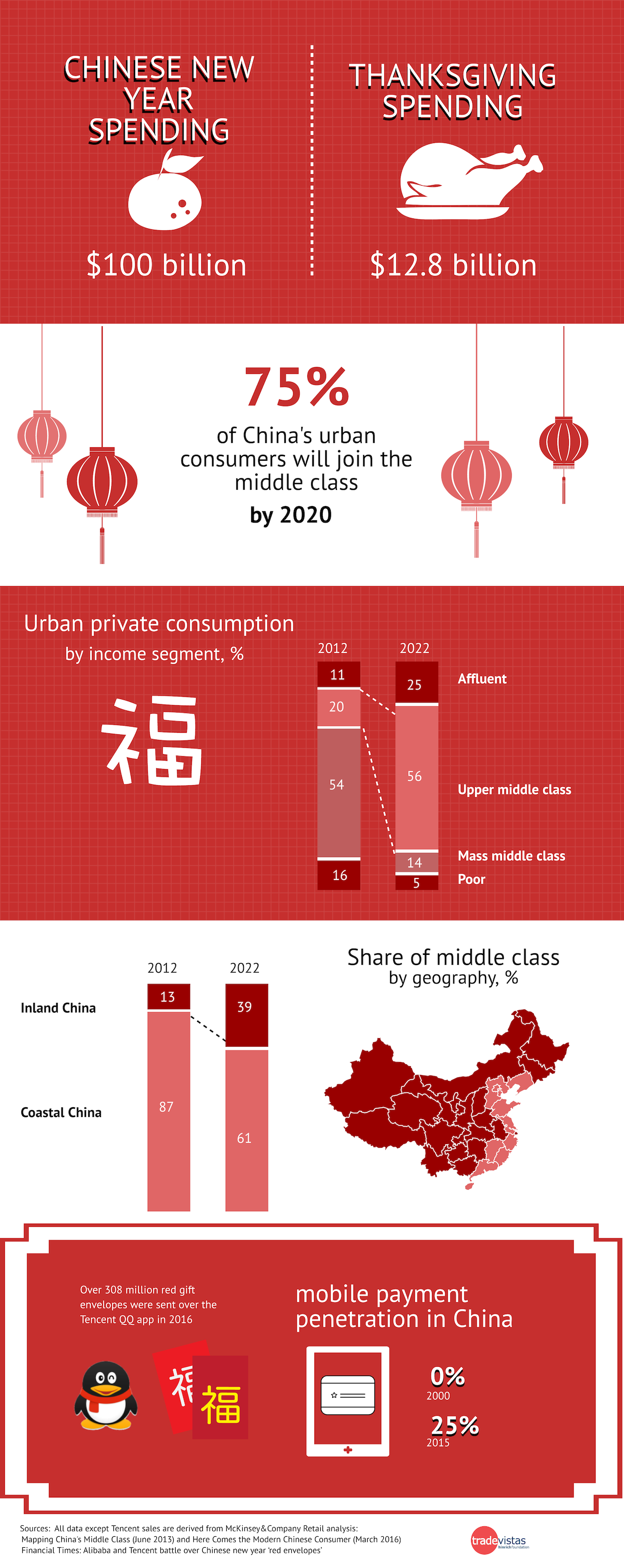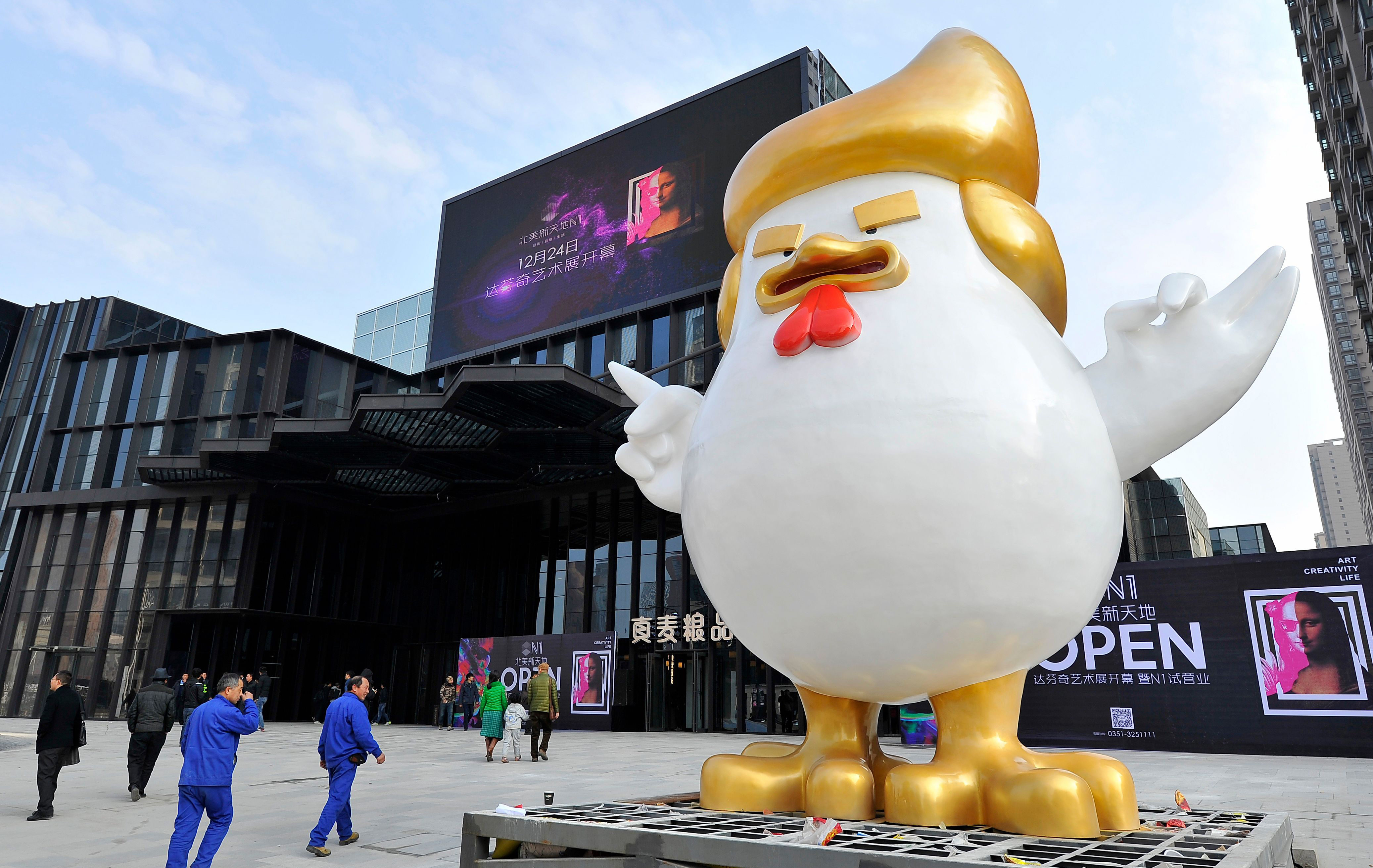Published 27 January 2017
Chinese New Year celebrations kick off on January 28. Despite slowing growth, Chinese consumers will goose their economy buying new clothes, food and drinks, and gifts for the holiday.
Chinese New Year celebrations kick off on January 28. Despite slowing growth, Chinese consumers will goose their economy buying new holiday clothes, food and drinks for gatherings, and gifts for relatives for the holiday.
China’s Ministry of Commerce calculates that retailers and restaurants in China pulled in 754 billion yuan (around $110 billion) over the 2016 holiday. It’s a good reminder that China doesn’t just sell goods to the United States, Chinese consumers represent an important growth market for U.S. products and services.
“Generation 2”
By 2020, more than 75 percent of China’s urban consumers will have attained the purchasing power of the middle class. Thirty-five percent of the new middle class will be the “G2” or Generation 2 – Chinese in their teens and early 20s who have a taste for Western products.
Another trend is the burgeoning “upper” middle class who will exercise disproportionate influence in the market. They are globally minded, have access to the Internet, will pay a premium for quality from cosmetics to watches to cars, and spend more on discretionary items like electronics.
Go West
The middle class population increasingly lives in smaller, inland cities – in the so-called Tier 2 and Tier 3 cities – moving the locus of consumer spending away from the megacities dotting China’s eastern seaboard. (The Donald Trump rooster statue pictured above looms outside a shopping mall in the Tier 3 city of Taiyuan in northern Shanxi province.)
E-tail Boom
The rise of e-commerce in China and uptake of mobile payments is fueling consumer spending. Last year, Tencent launched an app-linked payment system that allows users to send virtual red envelopes with Chinese New Year gift money to friends and family. Over 308 million red envelopes were sent through Tencent’s app alone, and Alibaba has launched a rival version this year.
China’s Travel Dollars Count as U.S. Exports
Over 400 million Chinese – more than the total population of the United States – are on the move over the Chinese New Year holiday, traveling to wish family and friends good fortune and prosperity.
The China National Tourism Administration estimates six million Chinese will celebrate by traveling overseas, with the United States being the second most popular destination. In total, the United States received two million visits from Chinese travelers in 2015, an increase of 426 percent between 2008 and 2015.
Those visitors spent $24 billion staying at U.S. hotels, eating at U.S. restaurants, taking U.S. transportation, and visiting U.S. sights, all of which goes into the national accounting as a U.S. export.
“Xīnnián kuàilè” – Happy New Year to all of us.

Source: “Mapping China’s Middle Class,” McKinsey Quarterly
© The Hinrich Foundation. See our website Terms and conditions for our copyright and reprint policy. All statements of fact and the views, conclusions and recommendations expressed in this publication are the sole responsibility of the author(s).



